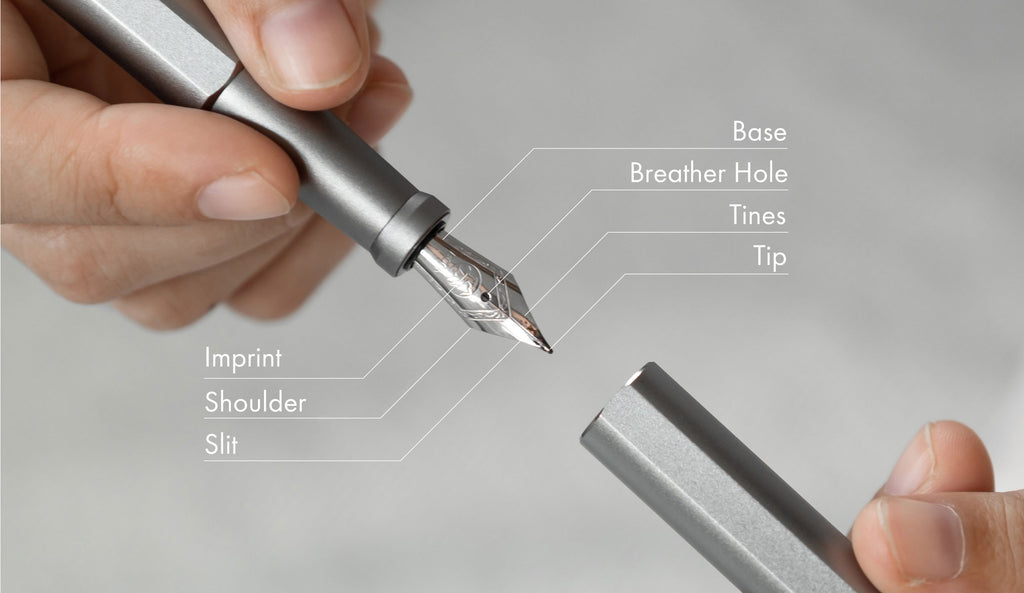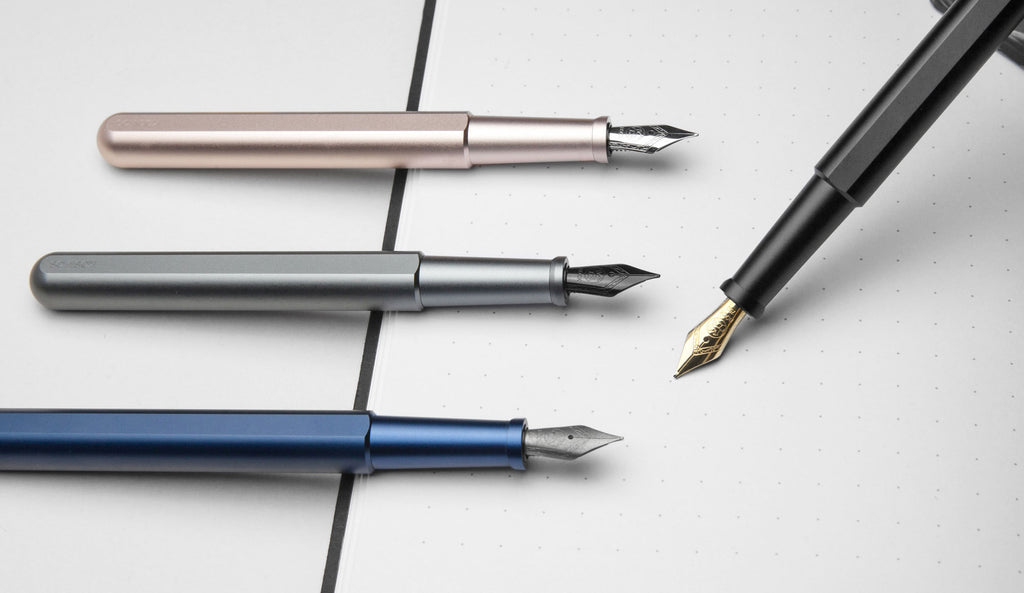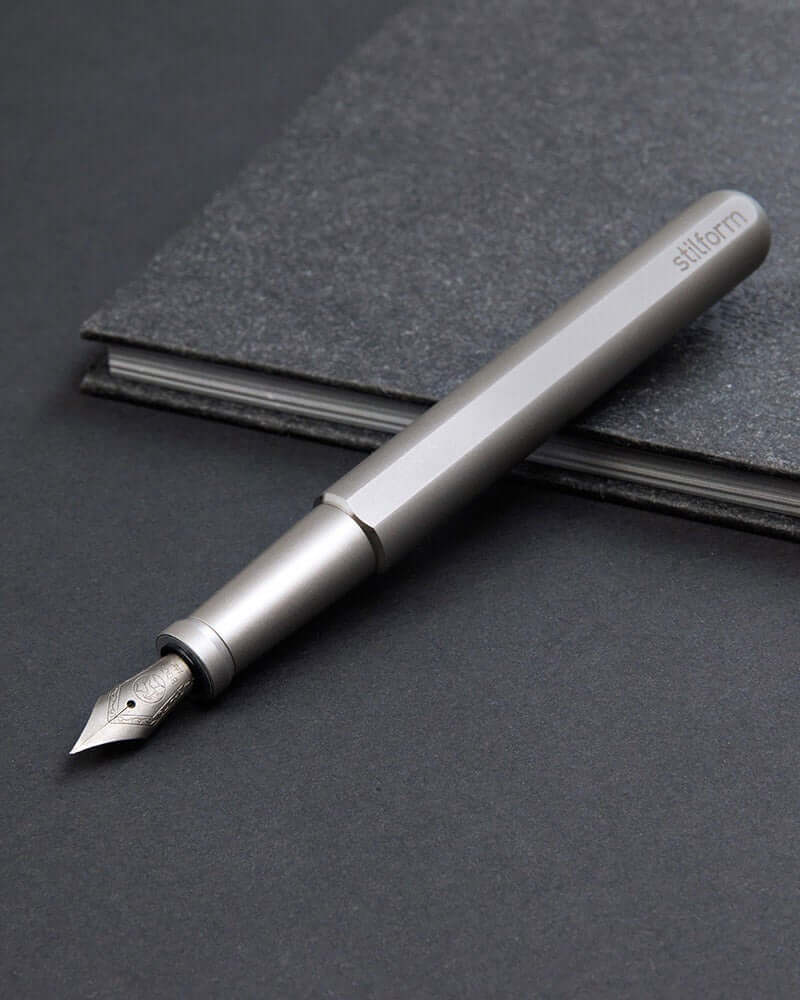A fountain pen is made of many bits and parts. For someone completely new to the world of pens, these parts may sound very confusing and scary. But once you get to know each and every part of a fountain pen and its function, it will all seem very easy. There are six main parts in a fountain pen: the cap, the barrel, the nib, the feed, the handle, and the converter/cartridge. In this article, you will learn more about these parts and their functions, as well as Stilform's new INK fountain pen.
The Cap – the one with the hidden trick
The cap is the component of the pen that covers the nib and attaches to the body of the pen. A pen cap traditionally has two functions: providing protection for the nib against accidental bumps and roll-offs and preventing accidental contact of the nib and the outside, thus stopping leaks.
Stilform’s INK Fountain Pen comes with an innovative cap with a self-aligning magnetic mechanism. To open and close the cap, all you have to do is give it a simple twist, and it will automatically get pushed off by a strong magnetic force. This unique cap also has an attachable clip created through metal injection moulding, which slides into the pen firmly, without causing any scratches.

The Barrel – the one with anti-roll design
The barrel is the body of the pen and is the largest and longest part of the pen. It houses the ink reservoir, provides support to the overall structure and covers the cartridge.
The body of the INK Fountain Pen has a sleek and minimalist design, with anti-roll properties enabled by aligned flat sides and sharp edges.

The Nib – the one that’s highly customizable
The nib is the metal tip of a fountain pen that touches the paper. A nib also houses several components:
- Tipping Material - the small bit of hard-wearing metal that is welded to the end of a nib
- Tines - two front parts of the nib that taper to the tip
- Breather Hole - the hole at the end of the nib slit, which allows air to assist in the ink flow
- Slit - the thin cut extending from the breather hole to the tip of the nib, which passes ink from the feed to the tip via capillary action
- Shoulder - the broadest part of a nib, where it starts to taper towards the tip
- Imprint - the engraving on the face of the nib that displays the brand, model, or nib size
- Base - the reverse end of the tip, where the nib attaches the section of a pen

Traditionally fountain pen nibs were designed from gold due to its flexibility and resistance to corrosion. Most modern nibs, however, are designed with stainless steel or gold alloys due to their strength and durability. Nibs also come in varying grades and tip shapes.
The Feed – the essential
Feed is the plastic component that touches the bottom of the nib. It serves a very important role in a fountain pen, providing the route by which ink passes from the reservoir to the nib and by which air fills the reservoir. If a fountain pen works well, it is because the feeder is working correctly.

Stilform’s nib units (Peter Bock nib 076) are well known for their reliable ink. They are available in Stainless steel, Black lacquered stainless steel, Titanium, or 14k gold. They also come in four sizes: extra fine (EF), fine (F), medium (M), broad (B). Their shoulder width is 8.0 – 8.4 mm, and visible nib length is 19.6 mm. The feed provides a reliable ink flow and ensures a smooth writing experience.

The Handle/Section – The guarantee of comfortable writing
The handle is the part where the nib fits in and attaches to the barrel of the pen. It is the final block of the pen’s tip and the point where the nib and feeder are inserted. It is also the most common grip point of the pen when you are writing. The front of the section where the nib fits in is called the grip, whereas the thin grooves in the pen that hold parts together are called threads.
The unique magnetic mechanism of Stilform’s INK Fountain Pen removes the necessity for threads, which ensures a comfortable holding position. The pen also has a fine balance, and writing with the pen for the long term won’t create any fatigue.
The Cartridge and the Converter – Get your favorite ink
A cartridge is a small, sealed disposable plastic tube that houses the ink supply of the fountain pen. When the ink runs out, you have to remove the used cartridge and insert a new one. The cartridge is the most common type of ink reservoir in modern fountain pens. The main downside of cartridges is that you can only use cartridges made for your particular pen. As a result, your choice of ink will be limited. Another downside is the price. Although cartridges are not very expensive, using a converter can help save you money in the long run.
A converter looks quite like a cartridge and can be used with most cartridge pens. Converter has a filling mechanism that allows you to refill it with ink, allowing you to use a variety of inks.
Still wondering how to assemble a cartridge or a converter onto the INK fountain pen? Here's a tutorial video that can help:
Stilform INK fountain pen is compatible with all international standard cartridges and converters. You can also buy our Stilform converter, which is custom made for our Stilform fountain pen. This converter is quite easy to use – you only have to twist the transparent knob of the converter to pull ink from a bottle. With this easy-to-use converter, standard ink cartridge colors are no longer a limitation.
Now that you know all about fountain pens, what are you waiting for? Get your Stilform INK Fountain Pen and enjoy an amazing writing experience!




































Share and get 15% off!
Simply share this product on one of the following social networks and you will unlock 15% off!